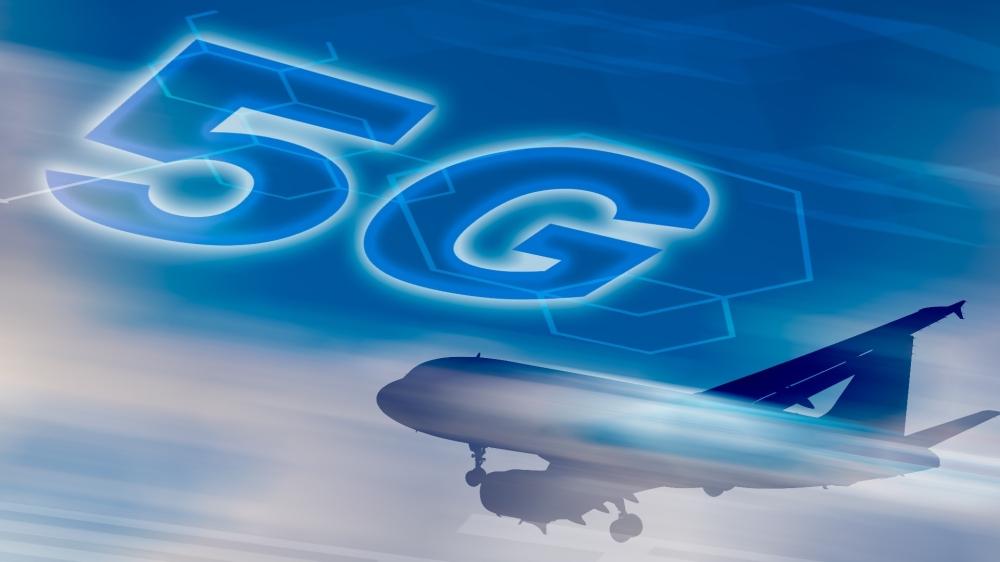There are continuous warnings of heavy losses incurred by international airlines due to the fifth generation networks. But what does sophisticated mobile networks have to do with airline profits or losses?
A few days ago, major air carriers in the United States of America warned that wireless carriers' plans to use 5G wireless services, which will start operating on January 5, could disrupt thousands of daily flights and cost airlines about $1.6 billion annually. in cases of delay.
As the mobile wireless industry prepares to roll out 5G technologies across the United States, amid the development of 6G mobile phones, millions of people in the country do not even have access to the home Internet.
This difference in access is called the "digital divide," and the FCC is trying to bridge it. Part of its plan is to allow mobile wireless carriers to use broadcast spectrum in the 3.7 to 3.98 GHz band, commonly referred to as the "C-band."
By licensing this band, wireless companies can provide 5G service through relatively small base stations. This would make it easier to bring 5G networks to rural areas, where providing internet over fiber would require huge and expensive infrastructure for relatively few customers.
Where did the problem come from?
The aviation industry is concerned about a piece of equipment called a "radar altimeter" (or radio altimeter). All types of aircraft use a radar altimeter to measure the height and distance between the aircraft and the ground, as it works by sending a signal towards the ground, then determining the altitude, based on the time it takes for the signal to reflect off the ground and return to the aircraft.
The radar altimeters operate in the 4.2 to 4.4 GHz frequency band, and these devices will be placed with 5G services, including devices that passengers routinely carry on board (such as mobile phones and tablets).
This section contains related articles, placed in the (Related Nodes field)

Aerospace industry groups at the FCC have warned that if C-band services interfere with radar altimeters, "significant disruptions to passenger air travel, commercial transportation, and helicopter services" can be expected.
Aerospace industry groups are well aware of how sensitive radar altimeters are to interference, and this was implied in a letter received by the Federal Communications Commission. Predictable.
According to “Reuters”, “the objection of the aviation industry is understandable, given that the government has already allocated C-band frequencies for 5G, and if there are problems, especially with outdated or outdated radar systems, it will impose costs on the aviation industry to improve the performance.
Prohibit low visibility landings
In a recent report, Bloomberg revealed that due to safety concerns, the Federal Aviation Administration has sounded the alarm that it may have to ban low-visibility landings in areas covered by the 5G network, a move that would disrupt up to 350,000 aircraft. flight, and incurring losses of about $2.1 billion annually, according to estimates by the pressure group "Airlines for America."
The agency stated that the fifth generation signals operate on waves close to those used by aircraft radar altimeters, which airlines say can affect pilots' ability to guess heights during landing, especially in difficult visibility conditions.
However, these warnings do not resonate with wireless service providers, who spent nearly $81 billion to acquire rights to use the disputed bands, who maintain that safety concerns are unfounded.
They are, however, proposing to reduce the quality of frequencies near airports, an offering that aviation officials do not think is sufficient. It seems that airlines are not in a mood to make any concessions, especially after two tough years, during which the sector witnessed billions of dollars in losses due to the pandemic. Now the ball is in the court of lawmakers, who must reach an agreement between the two sectors in a timely manner, and before the expected date for the launch of the fifth generation at the beginning of next year.
At the same time, Boeing plans to build its next aircraft in the virtual world, as the company looks to establish a foothold in the electronic frontier to outpace rival Airbus. In the future, the company plans to use 3D engineering designs, robots that talk to each other, and mechanics that are attached to Microsoft's HoloLens glasses.
The strategy, which will take two years to implement, aims to leverage a single digital ecosystem to unify the company's design, production and airline services processes. The Airbus CEO had also pledged to "create new production systems," as more companies look to the virtual world to develop their production systems.
This will be done by building 3D digital replicas of the aircraft to run production and performance system simulations for each aircraft. In sum, each aircraft will have a digital twin that includes all the information about it in the virtual world, allowing companies to overcome design problems and reduce time to market.